Growing kale in your garden is a wise decision for the health of your soil and the food you can produce! But did you know that there are even more benefits to pairing kale with companion plants? Companion planting, also known as intercropping or polyculture, is an ancient practice of growing multiple vegetables in close proximity. In this essential guide, we will explore all the best companion plants for kale and give you tips and tricks to get you started. Today, learn how to maximize crop yield and diversity through companion planting with kale!
About Kale Companion Plants
Kale is an easy-to-grow and often overlooked vegetable that can be a great addition to any home garden. It has many health benefits and is also one of the most nutritious vegetables.
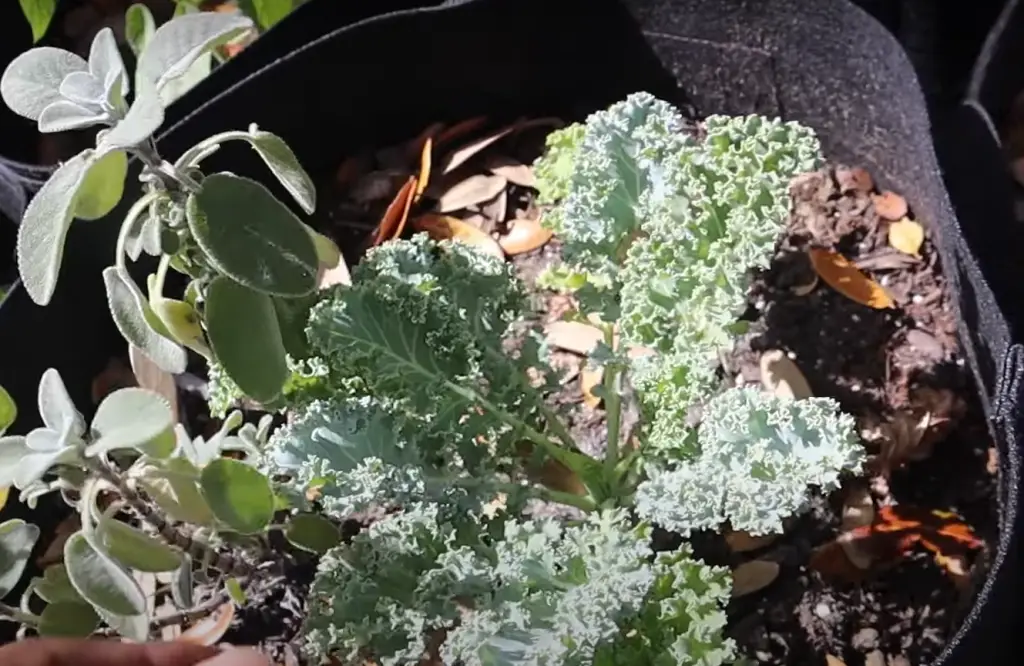
Kale grows best when planted near other companion plants that provide shade, protection, and nutrients for its growth. In this guide, we will discuss the top five kale companion plants and their benefits so that you can create your own successful kale garden with ease!
Kale Companion Planting
Kale is a great crop to plant in any garden, and if you’re looking to get the most out of your kale harvest, companion planting might be just the ticket. Companion planting is a tried-and-true technique used by gardeners for centuries that involves strategically placing certain plants near each other to promote better growth and increased yields.
When it comes to companion planting with kale, there are some plants that work better than others. For instance, aromatic herbs like basil, oregano, thyme, and sage can help mask the strong cabbage smell that kale can produce when it’s cooking. These herbs will also add flavor to your dishes!
Artichokes
Artichokes are a great companion for kale, as they require similar soil and light conditions.
Planting them in the same area can also help reduce competition for nutrients from other plants nearby. As an added bonus, harvested artichoke leaves can add flavor to salads or soups. For best results, keep the distance between your kale and artichoke plants at least 1 foot apart – any closer and you run the risk of overcrowding!Beets
Beets are an excellent companion to kale. Not only will they help protect your kale from harmful insects, but they also provide helpful nutrients for better growth. Plant beets around the edges of your garden and they will do a great job of keeping away any pests that come close to your kale plants. Beets can also help improve the soil quality in your garden, adding important minerals and nutrients that kale needs to thrive. Just ensure you don’t plant too many beets near your kale crop as it could lead to resource competition. With careful planning, however, you can have a healthy balance of both crops in your garden!
Celery
Celery is one of the best companion plants for kale. It helps to keep pests away and improves the flavor of the kale. Planting them close together also helps to conserve water, as both vegetables have a high water requirement. Celery is a great way to add depth and texture to your vegetable garden!
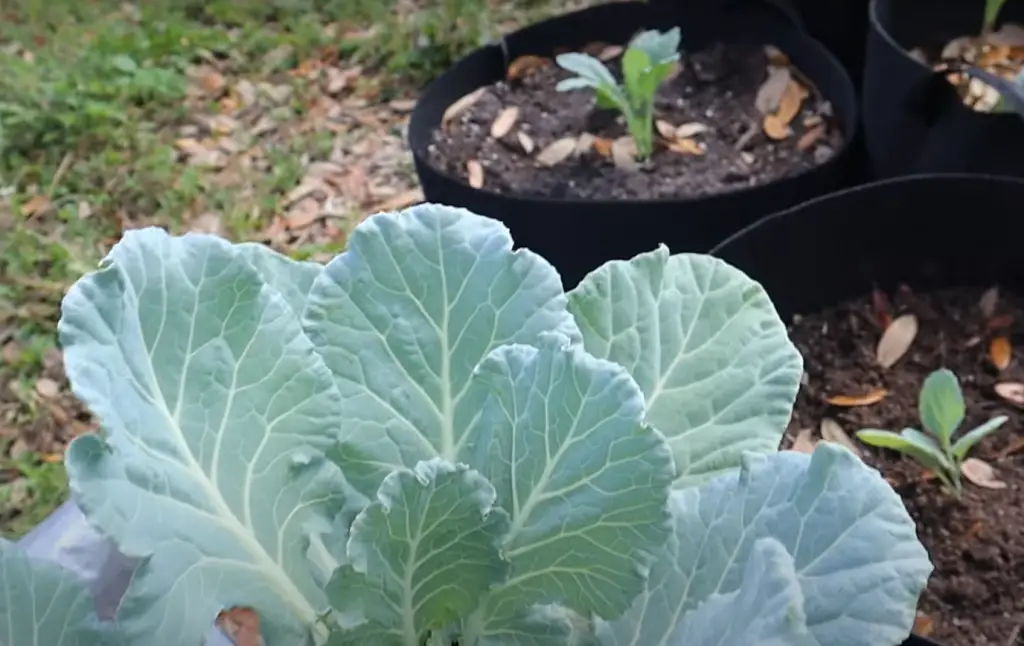
Just make sure that you don’t overcrowd your vegetables, as this can lead to diseases such as blight. As an added bonus, celery leaves are edible so you can use them in salads or soups. Be sure to harvest the leaves before they get too old, otherwise they will become bitter!
Cucumber
Cucumbers are fast-growing plants that will quickly fill up the space around your kale, providing shade and preventing weeds from growing. Because cucumbers also like to be watered often, they help retain soil moisture which can be beneficial for both plants. Plus, the roots of cucumber plants go deep into the ground so they won’t compete with the shallow roots of your kale. The two vegetables have different nutrient requirements, so you shouldn’t worry about them competing for resources in the soil either. Planting cucumbers near your kale can also act as a natural pest repellent since many pests don’t like the taste of cucumbers. To top it off, you’ll have a bountiful harvest of both vegetables in no time! Be sure to check the spacing requirements for your cucumber variety before planting since some may need more room to grow than others.
Lettuce
If you are looking for a great companion plant for kale, lettuce is an excellent choice. It has similar growing needs and requirements to kale, making it easy to pair the two vegetables in your garden or container. Lettuce also provides some protection from pests, allowing kale to become thicker and more robust. Furthermore, by planting them together you can benefit from the wide variety of lettuce varieties – from butterhead to romaine and everything in between – that provide additional color and flavor for your salads! For best results, make sure you give both crops plenty of room to grow. They will do best when planted at least 12 inches apart, so ensure adequate spacing when planting them together.
Onion
Onions are great companions for Kale, especially if you are planting in a smaller space. Onions will help keep pests away from your kale plants and they take up very little space, so you don’t have to worry about overcrowding. They also have a lovely aroma that adds an additional flavor boost to your dish! Just be sure to harvest the onions before they start competing with the kale plant for resources like light and water.
Peas
Peas can help enrich the soil with nitrogen and create a nutrient-rich environment for your kale to thrive. They also provide plenty of shade, which helps keep the ground cool and moist for your kale. When planting peas alongside kale, make sure to stagger them so they don’t compete for space and resources. Adding mulch between the two plants will help maintain moisture levels and protect your peas from pests. With the right care, you’ll have a lush crop of both peas and kale in no time!
Potatoes
Potatoes help deliver essential nutrients for plants to thrive. Potatoes are also an ideal plant because they have shallow root systems, which allow them to access more nitrogen and other minerals from the soil. You can sow potatoes in early spring and harvest them in late summer or fall before frost sets in. Planting potatoes near your kale will improve your crop’s production significantly!
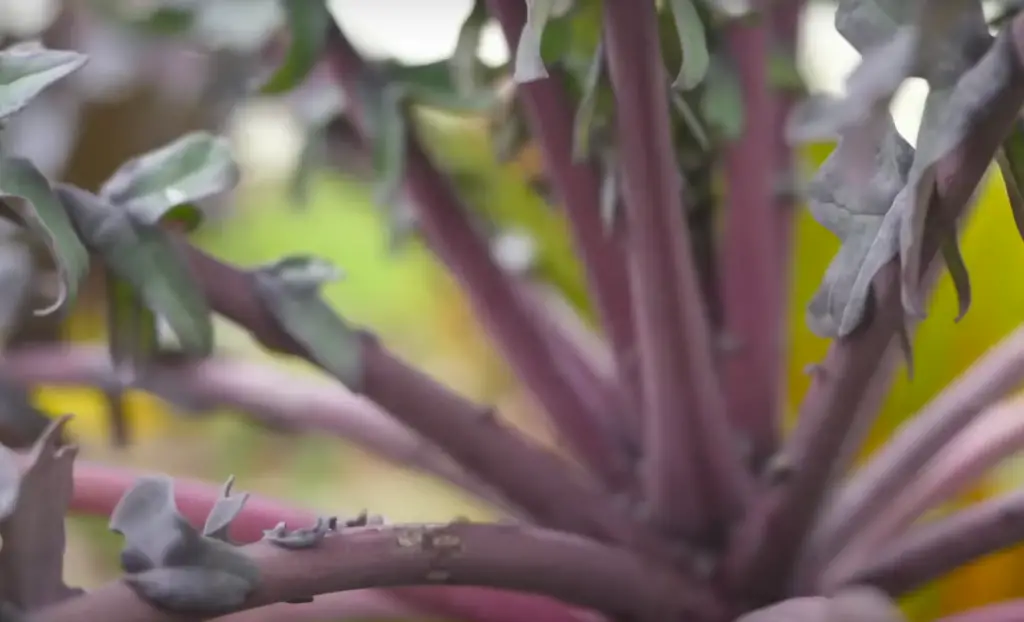
Just make sure not to overcrowd your space, as this can cause competition for resources between the two plants. Additionally, you should be aware that potatoes tend to attract pests like aphids and slugs, so keep an eye out for these critters if you decide to plant alongside your kale. With proper care and attention, planting potatoes
Radishes
Radishes are a great companion plant for kale. They thrive in cool temperatures, so they make a great addition to the garden and can sometimes be planted alongside kale. Radishes also help repel pests, like cabbage worms and aphids, that might harm your kale crop. As an added bonus, radishes mature quickly — in as little as three weeks — so you’ll have a delicious side dish in no time. Plant radish seeds directly into the soil about two inches apart and thin out the seedlings once they’re big enough to handle. If you want to extend your season even further, consider planting some fast-maturing varieties of radishes next to your kale plants during cooler months. With their quick harvest times and pest prevention power, radishes are an excellent companion plant for kale.
Spinach
Spinach is another great companion plant for kale. Not only does it benefit from the same cultural requirements, but spinaches are also known to provide protection from certain pests and diseases that affect kale. Moreover, planting spinach and kale together can help reduce insect damage and increase the yields of both crops. Finally, studies have shown that growing spinach and kale together also increases levels of beneficial minerals like iron, calcium, zinc, and magnesium in both plants. So if you’re looking for a nutritious harvest of kale, consider adding some spinach to your garden! Together they’ll make a great team!
Garlic
Garlic has been known to have various beneficial effects on the garden, including its ability to repel pests. As a companion plant for kale, garlic helps protect the kale plants from aphids and other pests. Planting garlic near your kale can also help improve the flavor of your kale harvest! To get the most out of this helpful companion plant, make sure to plant it at least 4-6 inches away from your kale. Garlic should be planted in well-drained soil with plenty of light and watered regularly throughout the growing season. Harvesting garlic cloves can be done when the tops turn brown and begin to droop downward. Enjoy all the flavors that planting garlic brings to your garden!
Basil
Basil is a perfect companion plant for kale. It not only looks great planted together, but it’s also beneficial for the growth of both plants. Basil acts as a natural pest repellent by deterring aphids and other pests that may be attracted to your kale crop. Additionally, it helps improve soil fertility and nutrient uptake by supplying essential nutrients for the soil, thereby improving the overall health of your kale crop. When planting basil with your kale, make sure to give them plenty of space so each plant can grow healthy and strong!
Dill
Dill is one of the best companion plants for kale as it helps repel harmful pests. It also adds a pleasant flavor to cooked kale dishes. Planting dill near your kale can help keep many pests away, such as cabbage worms and aphids, allowing your kale to grow without interruption. Dill also attracts beneficial insects like hoverflies and predatory wasps that feed on pest larvae. This means you don’t have to rely on pesticides or other chemicals to protect your crop.
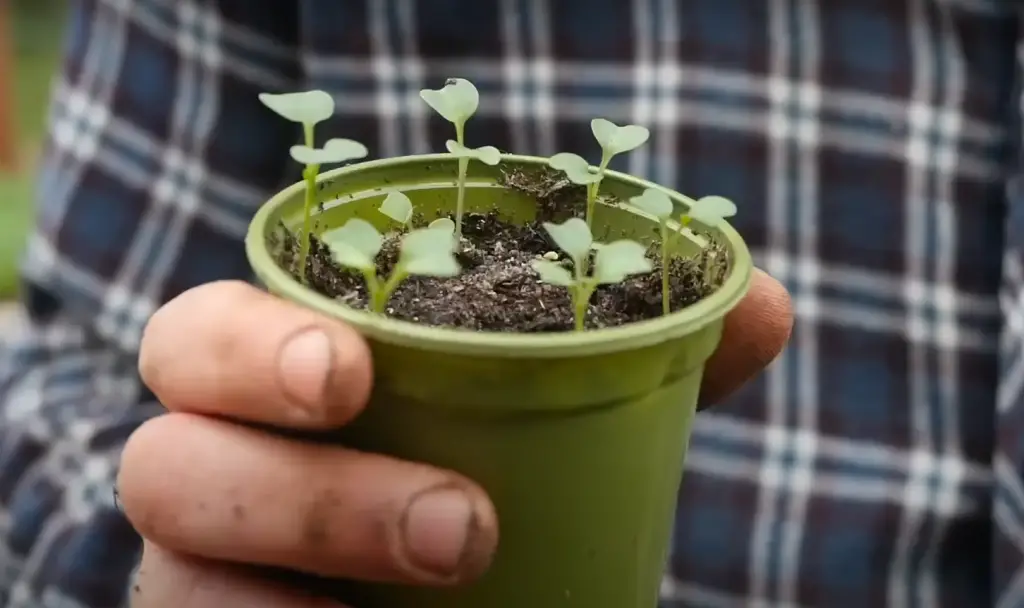
When planting dill alongside your kale, make sure it has enough space to grow; otherwise, it may compete with the kale for resources like sunlight and water. You should also avoid over-harvesting dill so that it doesn’t reduce the amount of beneficial insects in your garden. Finally, make sure you don’t disturb dill’s roots when weeding or cultivating around the plants. With a little bit of extra care, dill can be a great companion plant for kale!
Chamomile
Chamomile is a classic and popular companion plant for kale. This versatile herb not only helps deter pests, but also provides essential nutrients to the soil that kale needs to thrive. Chamomile can be planted in raised beds or directly into the ground near your kale plants. It’s easy to grow and doesn’t require much maintenance. As an added bonus, chamomile has many medicinal properties and can be used as a tea!
When grown together with kale, chamomile will help ensure that your crop grows healthy and strong!Mint
Mint is an excellent companion plant for kale, as it helps to repel cabbage moths and other pests. Plant mint near your kale plants in order to keep the pests away and enjoy healthier produce. It’s a great idea to interplant other herbs like oregano and dill with your kale as well, since they’re helpful in repelling pests while also enhancing flavor. Mint may spread quickly, so consider planting it in a container or using barriers to contain its growth. Be sure to harvest your mint frequently to prevent it from dominating the garden!
Rosemary
Rosemary (Rosmarinus officinalis) is a popular companion plant for kale. Not only does it help to repel pests, but rosemary also adds flavor when used in cooking. Rosemary grows well in full sun and sandy soil that is slightly acidic. It should be planted at least 18 inches away from kale plants so that they don’t compete with each other for nutrients. For best results, you can prune back the rosemary after every harvest to encourage new growth and protect your kale plants from being crowded out by strong-smelling herbs like rosemary. You can also try planting both herbs together if you have enough space; just make sure not to overcrowd them! When planted near kale, rosemary will help attract bees and other beneficial insects that will help pollinate your kale plants. This is a great way to ensure healthy, abundant harvests! For more tips on gardening with rosemary, check out our guide to companion planting with rosemary.
Sage
Sage is a great companion plant for Kale. It helps protect the Kale plants from pests and diseases, while also providing extra nutrition. Planting sage near your kale can help reduce aphid infestations, as well as control whiteflies, caterpillars, and other insect pests. Sage also improves soil quality and adds vital trace minerals to the soil around your Kale.

When planting Sage with your Kale, two things should be kept in mind: 1) make sure there’s enough space between the two plants; and 2) avoid allowing the Sage to outgrow the Kale, as this will stop it from providing any benefits. With proper spacing and maintenance, however, Sage makes an excellent companion for Kale!
Thyme
Thyme not only helps to repel pests, but it also adds flavor and aroma to your garden. Thyme likes full sun and well-drained soil, so make sure you place it in an area that gets plenty of sunlight. Planting thyme near your kale plants will help keep away aphids, flies, and other pest insects. In addition to its insect repellent properties, thyme can also be used in the kitchen as a flavorful herb! Try adding some freshly picked leaves to salads or cooked dishes for extra flavor. It’s also an attractive ornamental plant that looks beautiful when planted with kale. So why not give it a try? You won’t regret it!
Hyssop
Hyssop is a wonderful companion for kale, as it helps to repel harmful insects such as cabbage moths. Not only that, but Hyssop’s pleasant aroma also serves as an attraction for beneficial pollinators like bees and butterflies, making it doubly useful in the garden! Plant Hyssop near your kale plants, or try using its fragrant leaves to make a natural insect-repelling spray for your kale. Just remember that this plant can be invasive, so don’t let it get out of control! Also, be aware that some people have allergies to Hyssop; take care when handling this one!
Marigolds
One popular companion plant for kale is the marigold. Marigolds are especially effective at keeping bugs away from your kale plants, and their bright orange and yellow colors will add a splash of color to your garden as well! Plant them in between rows of kale, or around the perimeter of your raised beds. Be sure to deadhead spent blooms throughout the summer season in order to keep them flowering all season long. When harvesting the marigolds for use in flower arrangements, make sure you don’t remove too many so that they can continue doing their job protecting the surrounding plants from pests.
Nasturtium
Nasturtium is a great companion plant for Kale because it deters pests like aphids and cucumber beetles. In addition, the flowers of nasturtium will attract pollinators such as bees and butterflies which are beneficial to the health of your kale plants.
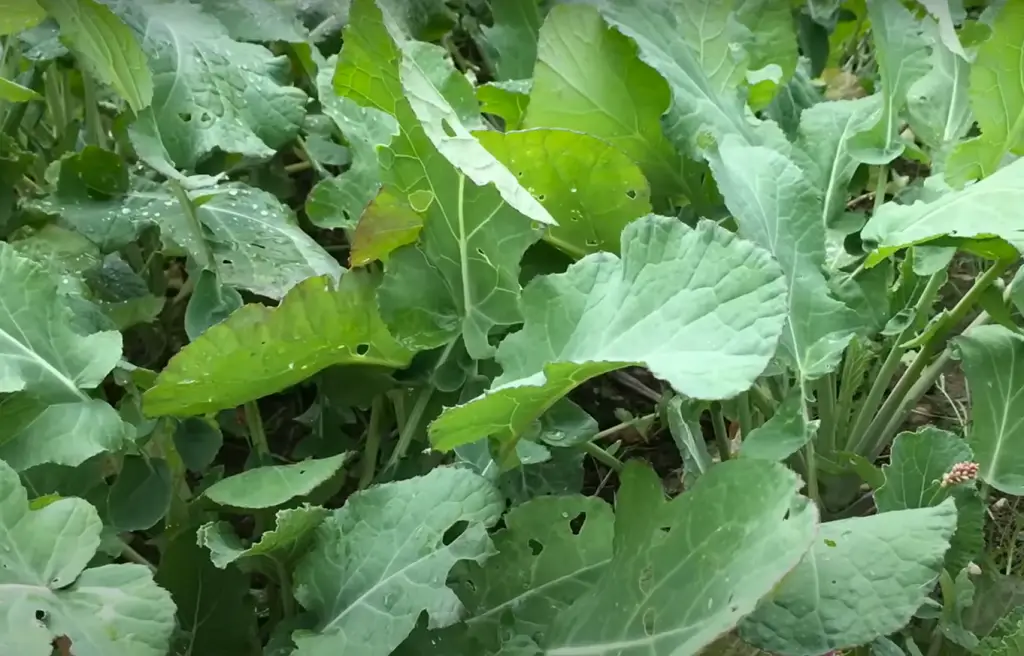
To get the most out of this companion planting combination, try planting them side by side or interspersed throughout your garden bed. The bright colors from the nasturtium flowers will add an extra pop of beauty to your garden too! When it’s time to harvest, make sure you don’t forget about the edible leaves and flowers of nasturtium – they make a delicious addition to salad mixes!
Sweet Alyssum
Sweet Alyssum (Lobularia maritime) is a low-growing plant with fragrant, white flowers that make a great companion for kale. Not only does it look beautiful planted near the kale plants, but it can also attract beneficial insects like bees and ladybugs to your garden. Sweet Alyssum is easy to grow from seeds or small plants and will spread quickly in well-drained soil. Plant sweet alyssum around the edges of your kale patch to provide good air circulation and keep pests away from the center of the bed where you have your kale growing. When planting sweet alyssum, be sure to water regularly during dry weather and mulch around the roots to keep them cool and moist.
Calendula
Calendula is a great companion plant for kale in the garden. This cheerful flower not only adds beauty to your kale patch but also attracts pollinators and beneficial insects that keep pests away from your kale crop. Calendula also helps with soil regeneration, helping to keep your kale healthy and strong by providing vital nutrients. Plant calendula around the edges of your kale bed or between individual plants for maximum benefit. Be sure to water regularly so that this hardy bloom can thrive alongside your kale! If you’re looking for an attractive addition to your edible garden, calendula is definitely worth considering as a companion plant for kale. The flowers are bright and vibrant, and they’ll help bring life and beauty into your garden. Plus, calendula will help keep pests away and provide important nutrients to your kale crop! Win-win!
Cilantro/Coriander
Not only do cilantro and kale look good together, they also benefit from growing in the same space. Cilantro can help to attract beneficial insects that will guard against pests on your kale plants. Planting cilantro in between rows of kale helps keep bugs away from your kale crop, while also adding another delicious herb to your garden. Make sure to provide both plants with enough room for their roots and adequate sunlight for them to thrive. It’s also a good idea to use companion planting techniques like intercropping, which involves planting two different crops close together. This way you can maximize yields and enjoy fresh herbs all season long!
Lemongrass
Lemongrass helps to repel certain pests that are attracted to kale plants, while also providing a boost of flavor to your dish. Plant lemongrass near your kale and you’ll be rewarded with beautiful foliage and an array of aromas when the leaves are crushed. The lemongrass’s tall stalks can also provide additional shade for the kale during especially hot days. To ensure optimal growth, make sure there is ample space between the two plants in order for them both to thrive. With the proper attention, these two will be one of the most dynamic duos in your garden!
Bush beans
Bush beans are great companions for kale. They can be planted together and the beans will climb on the kale, creating a natural trellis. This gives the garden an aesthetic look while providing good support for the plants. The bush bean’s roots help to keep the soil aerated and free from compaction, which helps kale to grow better. Moreover, they add nitrogen back into the soil as they grow, supplying nutrients that help boost growth in other plants. Bush beans also attract pollinators such as bees and butterflies which can increase yields of kale during harvest time. Lastly, bush beans do not compete with kale for resources since they have different requirements for light and water. Therefore companion planting is a great way to maximize space in small gardens without sacrificing the health or yield of either plant.
Hot peppers
Hot peppers and kales are a great companion combination that can help each other in the garden. The peppers will discourage pests such as aphids from eating kale leaves while the kale can provide shade for the hot peppers during sunny days. Hot pepper plants are also known to repel deer, a natural enemy of many vegetable gardens. Planting them together is an effective way to protect your kale crop without having to resort to chemical pesticides or deterrents.
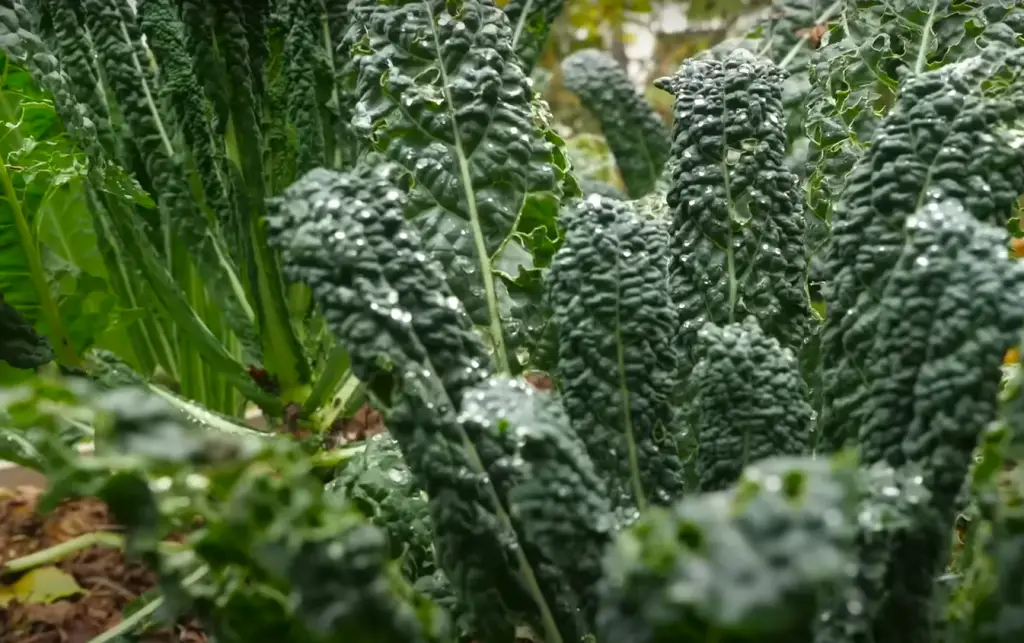
For best results, make sure you plant your hot pepper plants at least two feet away from your kale plants so that they don’t compete for nutrients in the soil. It’s also important to note that when harvesting hot peppers, be sure not to tip over any nearby kale plants. Doing so could cause the leaves of those kale plants to become damaged and even infected with pests.
Scallions
Scallions, also known as green onions or spring onions, are a wonderful companion plant for kale. Scallions help to repel pests such as aphids and Japanese beetles that can cause harm to your kale crop. They also add flavor and nutrition to the soil, making them an ideal companion for any garden bed that contains kale. When planting scallions alongside your kale plants, remember that they prefer slightly more acidic soil than other vegetables. To ensure their success, mix in plenty of organic matter and compost before planting them in your garden bed.
Leeks
Planting leeks alongside kale is beneficial. They draw nutrients from the same soil and grow at different rates, so they do not compete with each other. Leeks also attract helpful predatory insects that feed on pests, providing additional protection for your kale crop. For best results, plant leeks close to the outer edges of your kale bed, making sure there is enough room between them and the center of the bed where your kale plants are growing. This will help maximize their impact in protecting and nourishing your crop. Additionally, make sure to water both crops regularly as leeks need more moisture than kale does in order to thrive. Doing so will ensure optimal growth for both plants! [1]
What Not To Plant With Kale
Although kale is a popular plant with many advantages, it does not play well with all types of companions. Here are some plants that are best avoided when planting kale.
Other Brassicas
Kale often grows better when planted with other brassicas, such as cabbage, cauliflower, and broccoli. However, planting two members of the same family in close proximity can result in increased pest problems. Therefore it is best to avoid planting other brassicas near your kale plants.
Sunflowers
Although sunflowers are beautiful, they are not the best companion for kale. Sunflowers require a lot of nutrients which can put your kale in competition with them. Planting sunflowers too close to your kale could lead to stunted growth and discoloration of the leaves.
Tomatoes
Tomatoes and kale are often recommended as companion plants, but there can be problems with this pairing. Tomatoes are prone to a variety of diseases, including blight and mosaic virus, which can spread from tomatoes to nearby plants such as kale. Therefore it is important to be careful when planting these two close together.
Strawberries
Although strawberries and kale can get along, they are not the perfect combination. Strawberries tend to spread quickly through their long runners, which can be difficult to manage if planted too close to your kale plants. It is best to keep these two separate so that the strawberries don’t overwhelm the kale. [2]
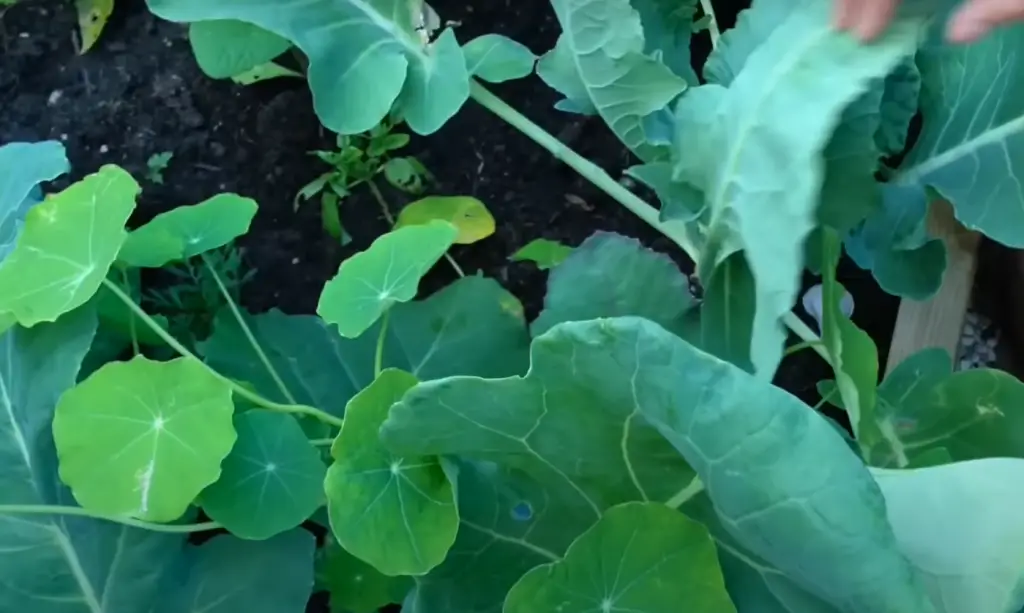
By avoiding these plant combinations, you will be able to ensure that your kale grows strong and healthy. With some careful consideration and planning, you should be able to create the perfect companion planting for your kale!
FAQ
What should you not plant next to kale?
It is important not to plant certain plants with kale. These include sunflowers, brassicas, strawberries, and tomatoes. All of these can be aggressive competitors for space and nutrients. Therefore, it is best to keep them away from your kale patch. [3]
What grows good with kale?
Kale is a hardy vegetable and grows well in most soil conditions. It can be grown in a garden bed or containers, and many companion plants are suitable for planting with kale to help protect it from pests and disease. Companion plants can also provide support by improving soil fertility, acting as ground cover, attracting beneficial insects like pollinators, and masking odors that may attract pests.
Some of the best companion plants for kale include beets, onions, celery, herbs (like basil), garlic, legumes (such as peas and beans), lettuce, marigolds, nasturtiums, radishes and spinach. These vegetables all share similar needs when it comes to light exposure and water requirements, so growing them together can help your garden thrive.
Beets and radishes are great companions for kale as they both need little to no fertilizer and help keep the soil moist. Beets also act as a natural pesticide, keeping pests away from the kale plants while providing additional nutrients to the soil. Garlic is another great companion plant for kale because it not only helps ward off pests but also has antifungal properties that can help protect against disease.
Herbs like basil, oregano, thyme, and sage are all great additions to any garden bed with kale since they attract beneficial insects like butterflies or bees that can help pollinate your vegetables. Marigolds are also popular companion plants for kale because of their bright colors and strong scent, which can help mask odors that may attract pests. [4]
In addition to companion planting, it is important to practice crop rotation when growing kale. This means not planting the same crop in the same spot every year. Crop rotation helps prevent diseases from building up in your soil while also helping to improve fertility and drainage.
So if you want a healthy kale harvest this season, remember to include some of these helpful companions in your garden! With careful planning and diligent maintenance, you will be on your way to enjoying beautiful kale for years to come.
Can you plant kale with zucchini?
No, you should not plant kale with zucchini. The zucchini plants may not receive enough essential resources as brassicas tend to absorb a significant amount of soil nutrients. In addition, zucchini plants can take up a lot of space and will reduce the available area for your kale. The best companions for kale are root vegetables such as onions, carrots, beets and radishes. These veggies are all relatively low maintenance and provide great benefits to your kale plants by keeping pests away and providing essential nutrients. Planting them near your brassicas is a great way to ensure healthy growth while also reducing problems with weeds or pest infestations. Finally, it’s important to note that you should avoid planting any kind of beans near your kale as they tend to compete for soil nutrients.[5]
Can you plant kale and spinach together?
Yes, kale and spinach are great companions for each other. Kale provides shade to spinach, which makes it less vulnerable to sunburn or wilting in hot weather. The nitrogen-rich soil around the kale helps feed the spinach and encourages healthy growth. Plus, you get a delicious mix of dark leafy greens on your plate! Just make sure to keep the kale plants from overwhelming their smaller companion by pruning regularly and thinning out extra seedlings as needed. [6]

It’s important to remember that both vegetables require ample moisture during those hot summer months when they’re actively growing. Make sure you water the garden bed frequently enough so that neither plant suffers from drought stress. Adding a layer of mulch can also help retain moisture and discourage weeds from taking over.
Useful Video: How to Companion Plant Kale! Kale Growing Guide to Greatness!!
Conclusion
Kale is a hardy plant that can thrive in many different environments with the proper care and when planted with companion plants. Knowing which companion plants to choose for your kale will help you ensure it gets all the nutrition it needs to remain healthy and flavourful. Keep in mind the conditions of your soil, as well as size and space restrictions when selecting companion plants for your kale garden. With careful planning and some experimentation, you’ll be able to have an amazing crop of delicious kale! Happy growing!
References:
- https://www.gardeningknowhow.com/edible/vegetables/kale/kale-companion-plants.htm
- https://www.allaboutgardening.com/kale-copmanion-plants/#What_Not_To_Plant_With_Kale
- https://www.homesandgardens.com/gardens/kale-companion-planting
- https://www.masterclass.com/articles/kale-companion-planting-guide
- https://www.homefortheharvest.com/companion-plants-for-zucchini/
- https://howtogroweverything.com/best-kale-companion-plants/





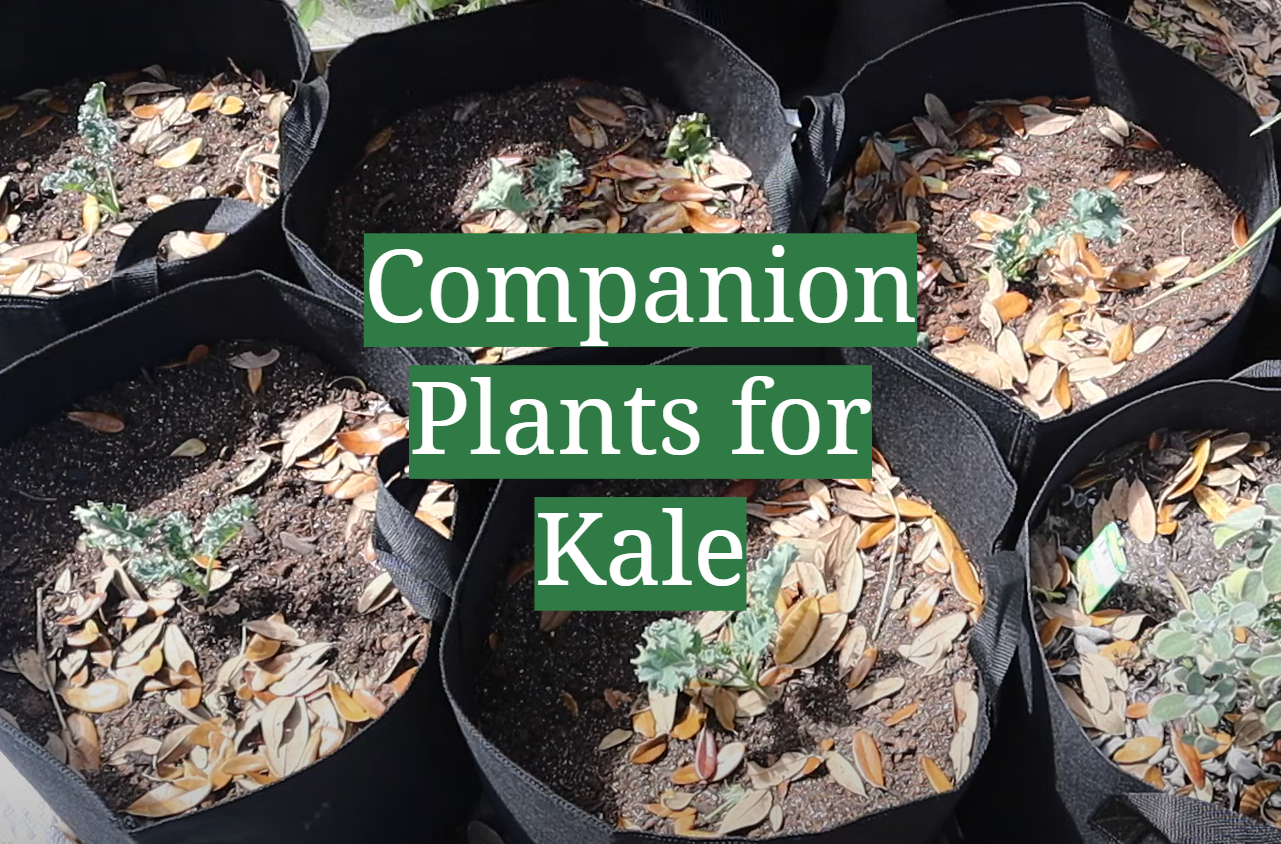




Leave a Reply
View Comments